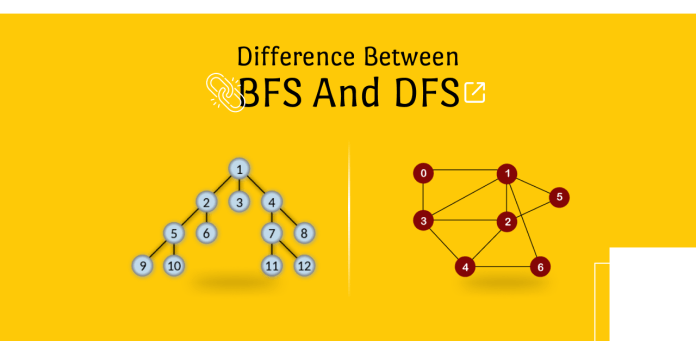Looking to understand the difference between BFS and DFS algorithms? Dive into this straightforward guide to explore the easy-to-understand disparities between Breadth-First Search (BFS) and Depth-First Search (DFS), including their applications, advantages, and limitations.
Introduction
Understanding algorithms like Breadth-First Search (BFS) and Depth-First Search (DFS) can seem complex, but it doesn’t have to be. In this article, we’ll break down the fundamental differences between BFS and DFS in simple terms, making it easy for beginners to grasp the concepts and applications of these algorithms.
Understanding BFS and DFS
What is BFS?
BFS, or Breadth-First Search, is like searching level by level in a tree or graph. Imagine you’re exploring a maze by checking all paths at each junction before moving on to the next junction.
What is DFS?
DFS, or Depth-First Search, is more like plunging deep into a maze, exploring as far as you can along each path before backtracking. It’s like wandering down a path until you hit a dead end, then turning back and trying another path.
Applications of BFS and DFS
BFS Applications
- Finding Shortest Paths: BFS is great for finding the shortest path between two points, like finding the shortest route on a map with no traffic.
- Mapping Networks: It’s also handy for mapping out networks or connections, like finding all your friends on social media who are within two degrees of separation from you.
DFS Applications
- Solving Mazes: DFS is excellent for solving mazes or puzzles where you need to explore all possible paths.
- Detecting Cycles: It’s also useful for detecting cycles in graphs, like figuring out if a chain of events could lead to an infinite loop.
Comparing BFS and DFS
Memory Usage
- BFS: Typically uses more memory because it needs to remember all the nodes at each level.
- DFS: Usually requires less memory since it only needs to remember the path it’s currently exploring.
Time Complexity
- BFS: Can be slower in some cases, especially when searching for the shortest path.
- DFS: Often faster, but may not always find the shortest path.
VISIT ALSO : Small Business Ideas to Start in 2024
Advantages and Disadvantages
Advantages of BFS
- Optimal Solutions: BFS guarantees finding the shortest path in unweighted graphs.
- Completeness: It ensures finding the shortest path with the fewest edges.
Advantages of DFS
- Space Efficiency: DFS is often more space-efficient, making it suitable for memory-constrained environments.
- Simplicity: The recursive nature of DFS makes it easy to implement and understand.
Disadvantages of BFS
- Memory Consumption: BFS can consume a lot of memory, making it impractical for large graphs.
- Complexity: Implementing BFS can be more complex, especially in limited memory scenarios.
Disadvantages of DFS
- Incomplete Solutions: DFS may not always find the shortest path, which could be a drawback in some cases.
- Stack Overflow: It’s possible to encounter stack overflow errors, particularly in graphs with deep paths.
FAQs (Frequently Asked Questions)
- What’s the main difference between BFS and DFS? BFS explores level by level, while DFS delves deep into one path before backtracking.
- When should I use BFS over DFS? Use BFS for finding the shortest path or exploring networks, and DFS for solving puzzles or detecting cycles.
- Can BFS and DFS be used interchangeably? While they have their strengths, BFS and DFS are not always interchangeable. Choose based on your specific needs.
- Are BFS and DFS applicable in real-world scenarios? Absolutely! They have applications in various fields like network analysis, social networking, and problem-solving.
- Which algorithm is more memory-efficient? DFS generally consumes less memory, making it suitable for memory-constrained environments.
- How do BFS and DFS handle cycles? BFS avoids revisiting nodes, while DFS uses backtracking to navigate through cycles.
Conclusion
Understanding the differences between BFS and DFS doesn’t have to be complicated. By breaking down these algorithms into simple concepts, you can grasp their applications and choose the right approach for your problem-solving needs. Whether you’re navigating mazes or mapping networks, BFS and DFS offer powerful tools for exploration and analysis.
To learn more about algorithms and problem-solving techniques, explore additional resources and experiment with implementations in your preferred programming language
